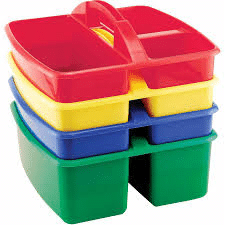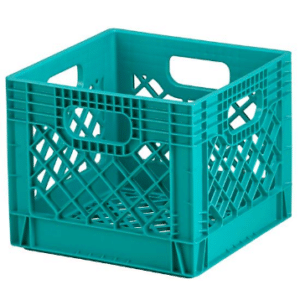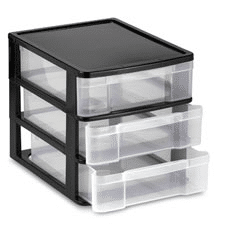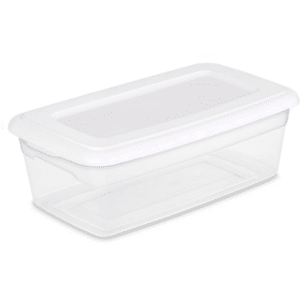by California Casualty | Educators |
A recent study conducted by Stanford University “shows a dismaying inability by students to reason about information they see on the Internet.” Plain and simple, our students cannot determine fact from fiction when it comes to online content. When conducting research for assignments and projects, it’s important that students learn to separate what is fabricated from what is credible.
Educators should be at the forefront of this “battle” against false information. We must teach our students to be critical of everything they read online and encourage them to take the time to verify what they find. It’s not as hard as it sounds. The following ideas, tips, and resources may help you teach your students how to be informed, discriminating consumers of online media.
Questions to ask when consuming a piece of media:
- Who made this? Did a well-known or common source create it?
- Does it make sense?
- Does the information match with other reliable sources?
- Who wrote it?
- When was it written?
- Who is the intended audience?
- Who paid for it? If you click on it, does someone get paid?
- Are important details left out of the message?
Items that may indicate a piece of media is fake (commonsensemedia.org):
- look for unusual URLs or site names, including those that end with “.co” — these are often trying to appear like legitimate news sites, but they aren’t.
- Look for signs of low quality, such as words in all caps, headlines with glaring grammatical errors, bold claims with no sources, and sensationalist images (women in bikinis are popular clickbait on fake news sites). These are clues that you should be skeptical of the source.
- Check a site’s “About Us” section. Find out who supports the site or who is associated with it. If this information doesn’t exist — and if the site requires that you register before you can learn anything about its backers — you have to wonder why they aren’t being transparent.
- Check Snopes, Wikipedia, and Google before trusting or sharing news that seems too good (or bad) to be true.
- Consider whether other credible, mainstream news outlets are reporting the same news. If they’re not, it doesn’t mean it’s not true, but it does mean you should dig deeper.
- Check your emotions. Clickbait and fake news strive for extreme reactions. If the news you’re reading makes you really angry or super smug, it could be a sign that you’re being played. Check multiple sources before trusting.
Games
Factitious – a game that tests your news sense.
Fact-Checking Websites
Snopes.com
FactCheck.org
Politifact.com
Lesson Plans
Channel One News – A lesson plan explores the problem of fake news sites, featuring a Channel One News video about the issue.
PBS Newshour – Fake news is making news, and it’s a problem. This lesson gives students media literacy skills they need to navigate the media, including how to spot fake news.
Corwin Connect – Guide students through meaningful discussions on the concepts of truth, media manipulation, falsification, public opinion, and more. (PDF Version)
TED-Ed – Damon Brown gives the inside scoop on how the opinions and facts (and sometimes non-facts) make their way into the news and how the smart reader can tell them apart.
ReadWriteThink – Hoax or No Hoax? Strategies for Online Comprehension and Evaluation.
CoolCatTeacher – 3 fast, free lesson plans to fight fake news
Sites With Fake Media (for learning purposes)
The Tree Octopus – An internet hoax created in 1998, the website fabricates information about the endangered Pacific Northwest Tree Octopus and what you can do to save it. The website is now used to teach students about internet literacy.
All About Explorers – All About Explorers has a series of lessons for elementary age students in which they can learn that just because it is out there for the searching does not mean it is worthwhile.
by California Casualty | Peace Officers |
Policing can be a different story for each rural and urban city. Due to large populations in cities, crime rates tend to be higher versus the countryside, so are we comparing apples to oranges?
Studies show that 80 percent of the U.S. population lives in urban or suburban areas, yet small towns remain attractive to nearly 45 million people. Some say that because of their jobs, families, lifestyle, choosing to live outside the busy urban areas, that the interest of raising a family in a smaller community will be less vulnerable to higher crimes. But did you know that police departments within these rural areas face challenges different from the urban sectors such as:
- Lack of backup officers
- Meeting friends, relatives, and/or neighbors at crime scenes as victims, suspects, and/or witnesses
- Limited peer interaction
As for urban policing, crime is going to occur almost 54 percent more (and growing) than in rural areas. Urban environments commonly have more crimes, like homicide and assault whereas crimes in rural settings tend to be offenses related to agriculture.
These statistics are not to say that policing in one area is better than another, but to show us how different life as an officer across the country can be. All police officers risk their lives for the safety of their communities and for that we can be grateful!
by California Casualty | Educators |
Our Education Blogger is a public school teacher with over a decade of experience. She’s an active NEA member and enjoys writing about her experiences in the classroom.
Organize your classroom on a budget. From labeling to sorting supplies, this list of must-have, inexpensive classroom organization hacks will help get your school year off to a great start and keep it tidy all year:
Colorful Plastic Caddies
Plastic caddies have multiple uses in the classroom. Place materials in them for easy science experiment or art station set up. If your students sit in groups, use the caddies to store necessary, daily utensils and supplies. Use them for art supply storage, math manipulative storage, or to simply organize your desk. I purchased my caddies from Target in the dollar bins ($3 each). I have also seen them at various dollar stores.

Milk Crates
Milk crates are a perfect fit for folders and files. I use one of my crates to store Student Data Folders when we are not recording in them. When I need to lug around supplies, I tend to use a milk crate. When topped with a homemade cushion, milk crates make great seats and benches (see Pinterest for millk crate seat ideas and tutorials). Stack them for use a classroom library (ziptie each crate together for stability and don’t overfill). I found some durable milk crates on sale at Target when all of the college dorm items go on sale.

Binders
Binders are great way to organize just about anything paper-related. Use them to file away your master copies, one binder for each subject or hour you teach. A substitute binder makes preparing for your absences a cinch. Archive student work in student portfolio binders. Store absent work and extra copies in a classroom binder for students to access as needed. Binders also make tracking student data simple. Label your binders with these free, editable, printable binder covers and spines from Curriculum Corner. 
Labels, Labels, and More Labels!
This will help you and your students locate supplies and materials around the classroom in a jiffy! In my experience, if it is labeled, I’m more likely to use it; I simply forget it’s there! I found several free, editable, printable labels on TeachersPayTeachers.
Polka Dot Labels
Black and White Chevron Labels
Rainbow Mixed Design Labels
Brights and Black Labels

Plastic Drawers
While plastic drawers aren’t inexpensive, you’ll see them as a savvy investment down the road. I purchased 4, 3-drawer units and will never go back to my previous method of organization. Label the drawers with each day of the week and place your lessons, materials, and other items for the day inside. Set aside drawers to label as “To Copy” and “To Grade” to help organize your piles of papers. I also use one drawer as the “Emergency” lesson plan drawer in case of an unexpected absence. Plastic drawers are helpful in storing and organizing manipulatives, art supplies, extra work, absent work, and copies for future lessons/units. Don’t forget to label your drawers!

Shoebox-sized Clear Bins
This one is a no-brainer. I never seem to have enough of these around. Small, plastic bins are one of the most versatile organization items in the classroom. Use them to store extra supplies, manipulatives, craft items, and games. Use labels to help identify what’s inside. They are easy to stack and easy for even the youngest of students to access. Dollar stores usually have these, but they aren’t great quality. I go for Sterilite and Rubbermaid brands when I can get them on sale. I also ask for these from parents in my Teacher Wish List at the beginning of the school year.

What are your favorite tricks to organize your classroom on a budget?
This article is furnished by California Casualty, providing auto and home insurance to educators, law enforcement officers, firefighters and nurses. Get a quote at 1.866.704.8614 or www.calcas.com.
by California Casualty | Educators |
Don’t have the hands-on materials you need to teach science? Don’t worry, you’re not alone. Many districts and schools lack the funding to furnish science textbooks, materials, and equipment. There is a solution. These websites can help you teach science interactively using games, videos, experiments, and other student-friendly activities for FREE. They are an engaging supplement to your classroom instruction. So, reserve that computer lab, sign up for those tablets, and get science-ing!
Science Kids – Enjoy free activities, experiments, games, facts, quizzes, projects, lessons, images, and videos. Students can learn about animals, biology, chemistry, physics, space, weather, and mcuh more.
SheppardSoftware – Free activities and games for younger students. Topics include life cycles, animals, the seasons, dinosaurs, elements, chemistry, cells, and many more.
PBSKids Science Games – For the youngest of our gradeschool students. PBSKids Science Games uses popular PBS characters, like Dinosaur Train, Sid the Science Kid, and the Cat in the Hat, to help teach young students about dinosaurs, nature, engineering, and animals.
Bozeman Science – This collection of videos and other NGSS resources helps teachers and students better understand the Next Generation Science Standards. Search by grade level, standard, or disciplinary core idea.
Coolmath-Games (Science) – Don’t let the website name deceive you. This small collection of free kids science games cover topics like space, electricity, light, physics, and magnets.
Kids.gov – In addition to a library of videos on many subjects, Kids.gov has an assortment of science games intended for a middle school level audience. Students, grades 6-8, can enjoy science games within the topics of animals, energy, earth, environment, invention, innovation, and space games.
Learning Games for Kids – At Learning Games for Kids, younger students can conduct science experiment games, sing science songs, amd play space and weather games.
NASA Space Place – Students of all ages will flip for these space-related games. Topics include Earth, Sun, Solar System, Universe, and Science and Tech.
Mystery Science – Free teacher memberships through June 2018! Mystery Science is aligned to the Next Generation Science Standards. No prep lessons with visuals and activities for K-5th grade.
NOVA Labs – Experience the science occurring in the Evolution, Cybersecurity, RNA, Cloud, Energy, and Sun labs that provide meaningful, interactive tasks for students to complete. Students can also watch video clips on each subject. NOVA Labs is geared toward students in grades 6-12.
PhET Interactive Simulations – Free, meaningful lab experiences for physics, chemistry, biology, Earth science, and math. PhET covers a wide range of topics and grade levels.
Mr. Nussbaum – Mr. Nussbaum’s Science includes a large collection of science interactives, explanations, generators, and activities for students. The wide variety of topics is intended for students in elementary and middle school.
Turtle Diary – Turtle Diary’s science games are sure to spark the curiosity in students preschool through 5th grade. Students can explore early science concepts covering a wide range of topics while reinforcing skills through engaging activities.
by California Casualty | News |
“Move over; it’s the law!” That is the urgent message from public safety groups across the U.S.
Here’s why; many of us freeze and don’t know what to do when we see an emergency vehicle on the side of the road with its lights flashing. Not moving over is breaking the law, and could endanger a first responder, tow truck driver or highway worker’s life.
Traffic incidents are the number one cause of in the line of duty deaths for law enforcement officers and highway workers. On average, an officer or highway worker gets hit by a driver every day in the U.S. They include Colorado State Trooper Cody Donahue, struck and killed November 2016 by a distracted truck driver as he investigated an accident, and Johnson County Kansas Master Deputy Brandon Collins died when a driver slammed into the back of his cruiser in January of 2017. They are just a few of the hundreds of law enforcement officers, firefighter/EMTs and highway workers injured or killed every year while trying to help others.
Because of the human toll, every state in the U.S. now has a “move over” law mandating that drivers approaching a stationary emergency or maintenance vehicle with flashing lights must move to the next adjacent lane if it is safe to do so or to slow down significantly if unable to move over.
A recent poll found 70 percent of Americans have not heard of “move over” laws and didn’t know what they should do. That’s why jurisdictions across the country are stepping up education and enforcement about their “move over” requirements as the summer driving season gets into full swing. The odds are that you’ve seen a tweet, a Facebook post or a variable message board promoting the “move over” law in your area.
Penalties vary, but drivers who fail to slow down and move over can get a ticket.
Rather than get a ticket or cause a serious accident, California Casualty is asking you to slow down and move over when you see an officer, paramedic, firefighter, tow truck driver or road crew with their lights flashing on the side of the road. You could save a life.






